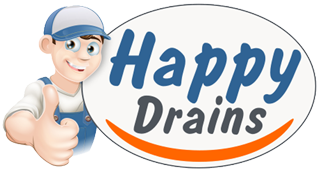Have you ever wondered what happens to your sewage after you flush your toilet? It’s easy to forget about what happens after it has gone down the drain, but a lot of hard work and effort goes into sewage treatment.
There are two different type of sewage. Foul water sewage contains waste from toilets, baths, wash basins, kitchen sinks, dishwashers and showers. There is also surface water sewage, which carries harmless rainwater away to rivers and soakaways.
Some sewage is combined, where both types are mixed together and sent for treatment. Newer systems tend to keep the two different kinds of sewage separate, but some locations still have the combined sewage systems.
All sewage follows the same route, regardless of where it has come from. It flows down drains and into sewers that are located beneath our roads. The sewage is carried to waste treatment, where it is screened. Screening takes place to remove all the foreign objects that have entered the sewers. This can include nappies, condoms, cans, plastic bags, clothing and more! It all must be removed during the first stage of treatment, as well as any debris or bits of gravel that have been washed in too.
All other big bits of waste are than removed from the sewage using sedimentation tanks. The water is pumped into the tanks where heavy particles of solid waste sinks to the bottom and forms a layer of sludge. The sludge is taken away for treatment, and afterwards is used by farmers as plant fertiliser, leaving only a waste water with a lot of invisible dirt.
To remove the invisible dirt from the left-over water, it goes through biological treatment, where billions of bacteria is added to break down the waste into harmless substances. This is done by putting the water in to large tanks and pumping in air, thus allowing the bacteria to grow and thrive, as well as by passing the water over filter beds with waste-eating bacteria on.
From here, the sewer water is almost clean. It needs to go through one final stage of treatment, where any remaining, small waste particles are removed through a humus tank. Sometimes the water may require further treatment, but usually the water is returned to rivers or seas.
The sludge that was taken away earlier on in the process must be treated before it is given to farmers. The sludge is placed in a digester tank where bacteria is used to break down the sludge and release any methane gas. The gas is collected and can be used to generate electricity or heat that will dry out the sludge and produce granules of fertiliser.
If you’re experiencing any issues with your drains, cesspits, septic tanks or otherwise, we can help. For more information, you can get in touch with the professional team at Happy Drains by giving us a call on 0800 849 8099 or via our contact page.


